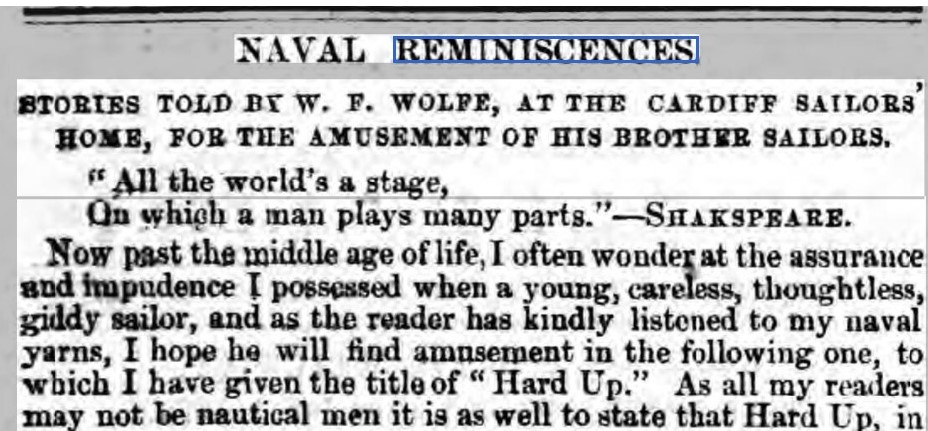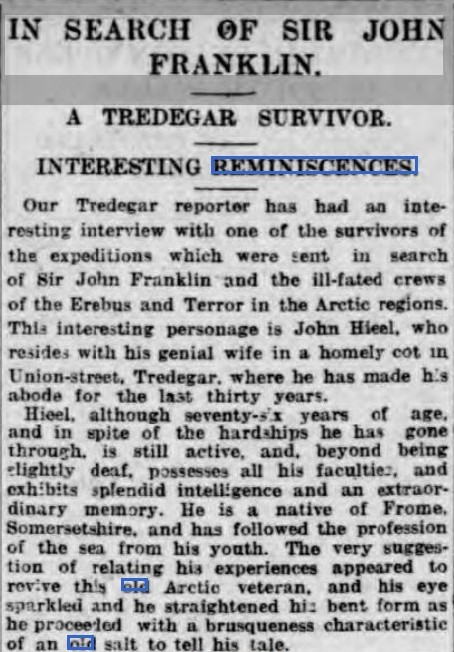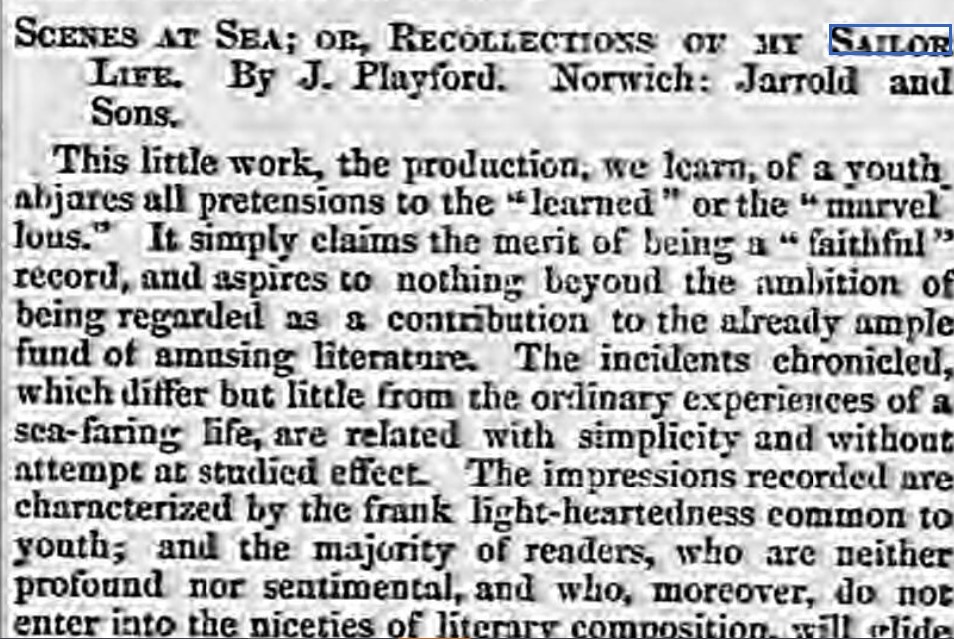NAM Rodger says in @LRB that there are “scarcely more than a score” of memoirs by ordinary sailors, in a review of Stephen Taylor’s “Sons of the Waves”, covering 1740-1840. Hmm, I thought. 

He’s talking about autobiography published in book form ... but in 19C most historical writing, inc memoir, was not to be found in books, but in magazines and newspapers, as @lesliehowsam has established.
I haven’t read the book, nor those of Prof Rodger & don’t know anything about #maritimehistory or #navalhistory. But 30 mins searching in @BNArchive, which contains less than 10% of British/Irish newspapers, found a dozen memoirs, not in Stephen Taylor's book.
Magazines often ran autobiography in series form (see @dolechner’s book Histories For The Many), and here are 2, “Letters of a South-American Seaman” in The Scots Magazine of 1825 and “Recollections of the Early Life of a Sailor,” United Service Magazine, June 1847
and an article in Tait’s Edinburgh Magazine for Feb 1843, “Reminiscences of an Old Sailor; No. I, The Mutiny of the Glatton”
Newspapers also ran memoirs in series, e.g. “Reminiscences of an Ancient Mariner”, Bell’s Life in London, beginning 13 April 1851.
This one looks fun: “Naval Reminiscences: Stories told by W.F. Wolfe, at the Cardiff Sailors’ Home, for the Amusement of His Brother Sailors,” in the Cardiff and Merthyr Guardian. 

Also free-standing articles like ‘The Royal Navy: Naval Reminiscences. A First Cruise’ St James’s Chronicle, 18 July 1829, story of an escapade from 1812; or “The Sailor’s Funeral, a nautical reminiscence”, Cumberland Paquet, 14 June 1831
or “In search of Sir John Franklin: A Tredegar Survivor: Interesting Experiences”, in the Western Mail, Cardiff, 1898 

Books were reviewed, excerpted or advertised, such as The Naval Club; Or, Reminiscences of Service, by WH Barker, Esq (The “Old Sailor”), [1842 publisher’s ad], another ad: “Reminiscences of the Discipline, Custom and Usages of the Royal Navy in the ‘Good Old Times’” (1849)
2 book reviews, of Scenes at Sea; or, Recollections of my Sailor Life, by J Playford (Norwich: Jarrold, 1856) [books not published in London don’t always appear in normal lit searches], or Reminiscences of a Sailor by William R Lord (1894) 

Of course, none of these may be what they claim, but I wonder if historians in search of memoir realise that newspapers and magazines should be the first port of call?
Winding my neck in now.
Winding my neck in now.
• • •
Missing some Tweet in this thread? You can try to
force a refresh













